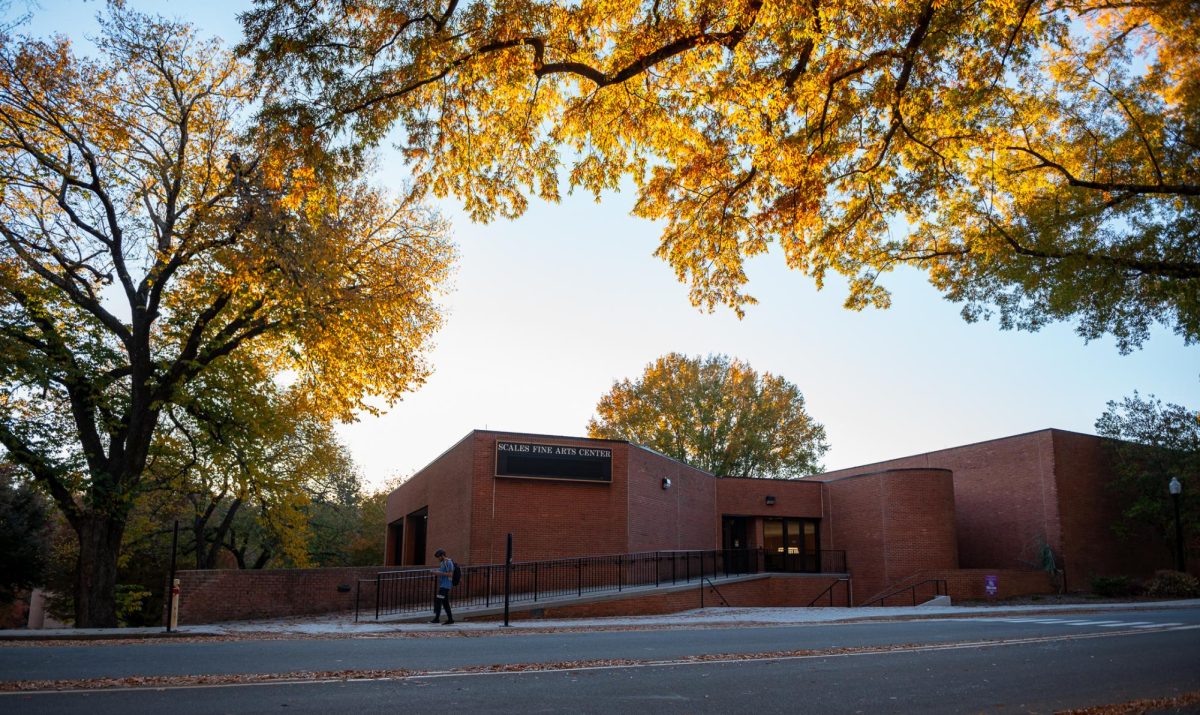On Dec. 2, AfriCasa, Wake Forest’s student-led African and Caribbean organization, put on a fall fashion show. The show centered around African culture within the diaspora. Students modeled pieces from their individual cultures and some also had the opportunity to model select outfits and jewelry from Umoja Arts and Crafts in the downtown arts district.
The theme “Walking in a Winter Afro-Land” depicted various storylines, bringing the audience on a journey of connectedness. At the start, the audience was introduced to the Sun God, who was on the hunt for his long-lost sister, the Moon Goddess. They both ventured through “Afroland” which consisted of the realm of “the crown,” three different stories of romance and a showcase of familial bonds. After searching far and wide, the two were united, and we witnessed the beautiful bond of siblinghood.
Throughout each of these realms, the atmosphere was electric with various afrobeat sounds filling the room. Preparing the audience for all that was about to come, many different African artists like Burna Boy, Tiwa Savage and Wizkid were playing from beginning to end.
The realm of “the crown” featured various members of African royalty showcasing ornate headwraps and intricate gold jewelry while walking in intentionally choreographed unison, with each member holding their own regal pose.
The romance section told the stories of different stages of love. The first story displayed the honeymoon phase of young African love as the woman excitedly jumped into her lover’s arms and they skipped away. The next romance story was a love triangle and the fight for a young man’s heart which ended in a friendship between the two women. The showstopper of the romance section displayed a Nubian king and his queen. Arm in arm, the powerful presence of the royal lovers and their undeniable chemistry radiated off the stage.

Finally, the bonds of kinship were explored through the long-awaited connection between brother and sister.
I had the privilege of taking part in this special show and got to witness, firsthand, the hard work and dedication put into the fashion show. With all the excitement and buzz leading up to the show, I asked some models what they were most looking forward to.
“I’m most excited about having the opportunity to wear my cultural clothing,” senior Nasra Deria said. “I am Somali, and the traditional dress that I am wearing is called a dirac and there are three pieces to it.”
She continued: “There is the gogorad, which is on the bottom, the garbasaar (the shawl) and then the actual dirac, which is like a dress. Most of the time they are super colorful and comfortable, oversized and beautiful. They are for special occasions, and I am really excited to be able to wear one.”
There were also individuals who had the opportunity to model outfits from other cultures.
“I am from Cameroon, but I’m wearing a dress from a neighboring country, Nigeria,” said sophomore Chelsea Njei. “A common type of fabric that is worn in the area my parents are from is called the toghu, and it’s a fabric from Bamenda in the northwest region of Cameroon. It’s a royal fabric originally worn by chiefs and people in high places.”
One of the most important aspects of the show was representing all of Africa, not just what people think African culture looks like. Vice President and Treasurer of AfriCasa Fatou Diallo emphasized this point.
“I felt like we needed to have the fashion show to explore the diaspora but also make it known that it’s not just about West Africa,” Diallo said. “There are other countries, such as Eritrea and Ethiopia, that are a part of African culture, and I think a lot of people don’t know that.”

Diallo’s sentiments of inclusion were extremely important to me, as this show was the first time I had the opportunity to represent my culture at this university. I was able to walk down the stage in my habesha kemis, a traditional Ethiopian dress. With my netela, a traditional scarf, wrapped around my head, I felt proud to walk across the stage and represent the country from which my parents immigrated.
Between the models and the executive board, there was an undeniable sense of community. To be in a space of total representation was something of which everyone was appreciative. Many people still don’t understand the significance of having spaces like this, particularly in spaces where your group is the minority. Njei described the experience as “heartwarming” and “beautiful,” as people could truly be themselves.
AfriCasa President Jolie Dumay spoke about the importance of representation.
“Being at a predominantly white institution, there often aren’t opportunities and spaces for people of color to have a cultural exchange,” Dumay said. “We have a lot of things with BSA (the Black Student Alliance) and promoting a Black community, but we don’t have anything specific to the culture expression, art and history of the diaspora, and that’s important because there are so many cultural students at this university.
Dumay continued: “Being able to put AfriCasa on the map — separate from BSA — is something that we want to do. We want to make AfriCasa our own thing and provide the space for people to learn about various cultures in the diaspora.”
The final walk out of all the models was powerful as we stood side by side, soaking in that moment of unity and pride. Despite the end of amazing rehearsals and final jitters backstage, everyone was still buzzing with excitement, because we knew that this was just the beginning of what we will see from AfriCasa.
“It’s really just about love and all of us being together because I do feel like Africans need to have community, especially where there isn’t one,” Diallo said. “Since my freshman year I’ve been creating spaces for us, so this is just another addition.”



















